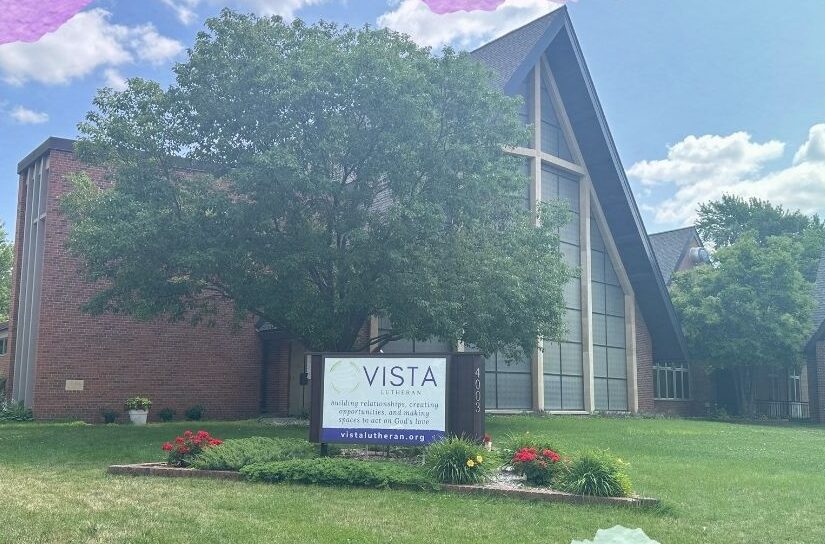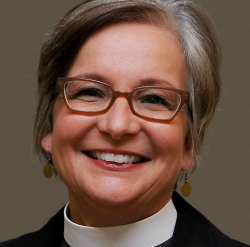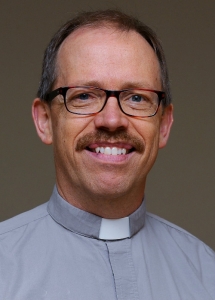Blessings for Epiphany
January 6th, 2026 By Bishop Jen Nagel
By Bishop Jen Nagel
We have an olivewood nativity set in our family. It’s set up atop the piano with Joseph and Mary, and the young baby Jesus surrounded by curious shepherds, a few sheep, and a lowly donkey. Now some put all the characters into the nativity right away, but I prefer the day-by-day approach with the Magi coming from the east, slowly plodding. On the piano they traverse assorted hymnals and framed kid-school pictures as they approach the manager, such is the journey to the Christ Child, to our Savior.
A bright and blessed Epiphany (January 6), dear ones. Twelve days after Christmas, Epiphany is a church festival celebrated by Christians around the world. It’s the far end of an arc that begins at the start of Advent, encompasses the days of Christmas, and opens into a season of revelation: the star guides the magi, Jesus is baptized, and then Jesus is off and running, calling out “Come and see” and “Follow me”.
In the spirit of Epiphany and revelation, and as this new year unfolds, I’ve been musing about the Magi (Matthew 2:1-12), the blessings they bring, and what these blessings can mean for us, our communities, and this battered world. Here’s a short list of blessings…
- Wisdom: I marvel at the wisdom (spiritual knowledge, astronomy, political awareness, and wits) of those Magi. The Wise Ones navigated the land, but also the political and social terrain of Herod’s powerful, vengeful reach. Remember how this fits in Matthew’s Gospel? The Magi leave for “their own country by another road.” Warned in a dream, Joseph, Mary, and Jesus take refuge in Egypt. And in Bethlehem, with Herod’s orders, the innocents are slaughtered. The grief and trauma of these stories are our history, and they have surprising currency even now. May you be blessed with a full measure of wisdom and courage to navigate these days and all that they hold.
- Trust at the Threshold: I read this passage as a threshold story. A story with action at the threshold, at the crossroads. When you read this passage closely, perhaps with an atlas in hand, it’s complex geopolitically and personally, and strangely familiar as we take in the news of our day. I am deeply moved by the trust we muster in the threshold moments of discernment and transition, where we reflect on the past and look to the future. May you be blessed with trust at the thresholds and the steady embrace of Jesus.
- Patience: My goofy tradition of moving the Magi across our piano is grounded in the reality that the Magi didn’t arrive at the manger with the rest of the guests; rather, they came later, much later, months later. The slow work of revelation is underrated. Our fast-paced society and the drive of anxiety can trick us to believe in speed. Over and over, the Holy Spirit’s revealing takes time. May you know the blessing of patience in the slow revealing of God’s new possibilities.
I could go on… the blessings of inclusion, the blessings of curiosity, the blessings of falling to your knees in worship, the blessings of focus and clarity, the blessings of well-appointed gifts, the blessings of cross-cultural exchange, the blessings of bright stars and those who point the way. Epiphany blessings of the Christ Child, dear ones and the wisdom, trust, and patience to sustain the journey.

 By Pastor Lydia Svenulski
By Pastor Lydia Svenulski

 By Pastor Craig Pederson
By Pastor Craig Pederson




 By Brenda Blackhawk
By Brenda Blackhawk 
 Of course, I realize that I’m talking about something I didn’t experience when I’m sure that many of you reading this were there and remember those bumps very clearly. I just want to take a moment to celebrate what the ELCA has grown to be and the success of that merger 33 (ok, almost 34) years ago.
Of course, I realize that I’m talking about something I didn’t experience when I’m sure that many of you reading this were there and remember those bumps very clearly. I just want to take a moment to celebrate what the ELCA has grown to be and the success of that merger 33 (ok, almost 34) years ago. 



 By Rev. John Hulden, Assistant to the Bishop
By Rev. John Hulden, Assistant to the Bishop